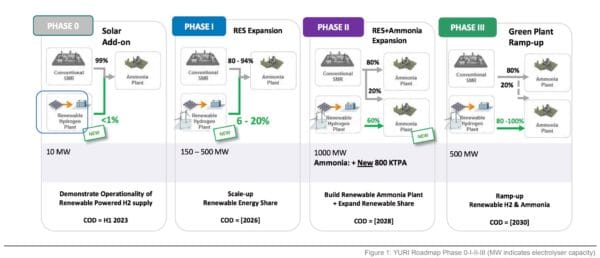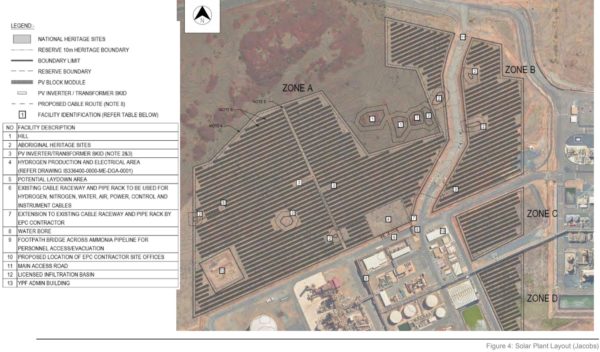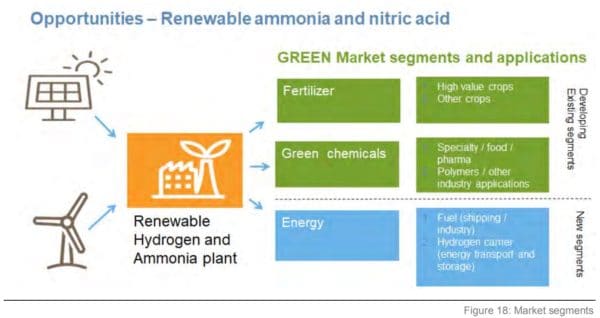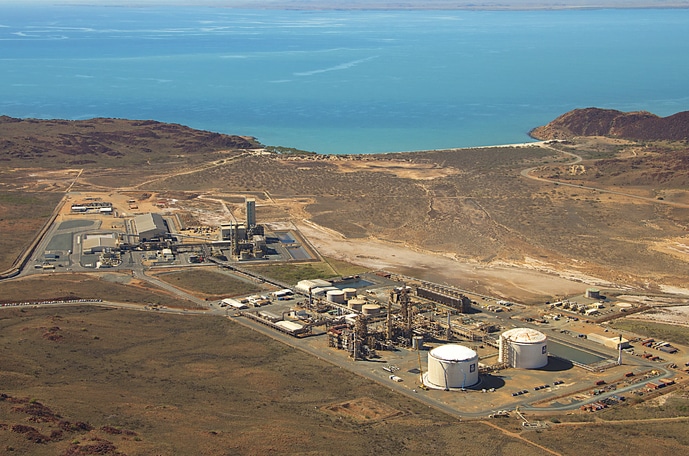French Renewables giant, Engie, and Pilbara ammonia producer, Yara, have recently published a report on a feasibility study into the transition of Yara’s ammonia plant’s dependence on natural gas to green hydrogen. The report shows plans for the 10 MW solar first phase of what is to become a “Pilbara Hydrogen Hub”.
The study, partially funded by the Australian Renewable Energy Agency (ARENA), began in February 2019 and has sought to investigate how the Yara Pilbara Fertilisers (YPF) plant can decarbonise through a large scale renewable hydrogen project. With the publication of the study’s latest report it is clear that Engie and Yara have developed a multi-stage Yuri Roadmap to produce renewable hydrogen through electrolysis via an large-scale onsite solar array.

With the abundant solar resources on offer in the Pilbara, not only will the partners be able to produce renewable hydrogen and ammonia as feedstock for renewable chemical production, but also clean fuel for power generation and shipping both locally and to international markets such as Japan and broader Asia.
Of course, the Pilbara is already home to the recently approved 26 GW Asian Renewable Energy Hub which, among other ventures, aims to produce green hydrogen for export to Asian markets. And indeed there are other burgeoning green hydrogen for export projects in Western Australia (WA), such as the 5 GW Murchison Renewable Hydrogen Project near Kalbarri, and Infinite Blue Energy’s $350 million Arrowsmith Hydrogen Plant.
The multi-stage Yuri Project will ultimately culminate in the development o the “Pilbara Hydrogen Hub”, which, in addition to producing clean ammonia, could potentially inject and blend hydrogen into natural gas pipelines via the nearby Dampier Bunbury pipeline, supply clean hydrogen fuel for local road transportation such as mining trucks, and export liquefied hydrogen via Dampier port to Japan and broader Asia.
The first phase of the project, known as Yuri Phase 0, will see the construction of a nominally 10 MW solar plant and co-located electrolyser at YPF. The solar farm, which is expected to generate an energy yield of approximately 35,000 MWh each year, will be complemented with the addition of a battery energy storage to form a microgrid. This $70 million phase of Yuri alone is forecasted to produce 625 tonnes of hydrogen and 3,500 tonnes of ammonia annually.

According to the consortium’s renewable hydrogen and ammonia market study, renewable ammonia is expected to gradually replace conventional ammonia and nitrogen products which are primarily used in fertiliser and as chemical feedstock. Yara expects a premium market for renewable ammonia to be developed within the next decade. Moreover, ammonia can be used directly in combustion and indirectly as a hydrogen carrier, presenting enormous potential in transport and shipping.

Although the latter three phases of the Yuri Pilbara Hydrogen Hub have not been finalised, phase 0 has already been initiated and relevant stakeholders engaged. A completion date for Phase 0 is scheduled in the fourth quarter of 2022. The project will no doubt have the support of state and federal governments as their respective hydrogen strategies are strongly orientated toward production for export markets.
This content is protected by copyright and may not be reused. If you want to cooperate with us and would like to reuse some of our content, please contact: editors@pv-magazine.com.









4 comments
By submitting this form you agree to pv magazine using your data for the purposes of publishing your comment.
Your personal data will only be disclosed or otherwise transmitted to third parties for the purposes of spam filtering or if this is necessary for technical maintenance of the website. Any other transfer to third parties will not take place unless this is justified on the basis of applicable data protection regulations or if pv magazine is legally obliged to do so.
You may revoke this consent at any time with effect for the future, in which case your personal data will be deleted immediately. Otherwise, your data will be deleted if pv magazine has processed your request or the purpose of data storage is fulfilled.
Further information on data privacy can be found in our Data Protection Policy.